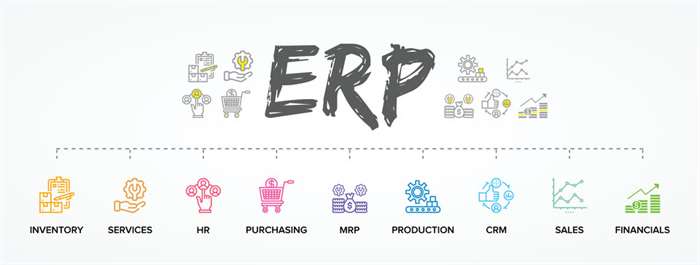Currently, there are profiles for mobile devices, printers, and television sets. Profiles should not be confused with media types, which were added in CSS 2. Some CSS 2 properties that no browser successfully implemented were dropped, and in a few cases, defined behaviors were changed to bring the standard into line with the predominant existing implementations.
CSS 2.1 first became a Candidate Recommendation on 25 February 2004, but it was reverted to a Working Draft on 13 June 2005 for further review. It returned to Candidate Recommendation on 19 July 2007 and then updated twice in 2009. However, because changes and clarifications were made, it again went back to Last Call Working Draft on 7 December 2010. Each level of CSS builds upon the last, typically adding new features and typically denoted as CSS 1, CSS 2, CSS 3, and CSS 4. Profiles are typically a subset of one or more levels of CSS built for a particular device or user interface.
CSS properties
Now that we’ve explored some CSS fundamentals, let’s improve the appearance of the example by adding more rules and information to the style.css file. Properties These are ways in which you can style an HTML element. (In this example, color is a property of the elements.) In CSS, you choose which properties you want to affect in the rule. A nested & selects the parent element in both SASS and LESS. It’s not just for pseudo elements, it can be used with any kind of selector.
- CDNHTMLNTFSUPSAPIWPSPHPOSSNFTLiFiSSHDVirusCSS is used as an acronym to represent Cascading Style Sheets.
- Instead, the CSS code is used within the HTML code to alter a single element.
- The style definitions are normally saved in external .css files.
- You’ll see reference to these modules as you explore MDN.
- After all, you want to get down to designing and enjoying the creative process, both while you learn and in your career.
Now we are going to discuss some FAQs that are frequently asked on the internet. Try experimenting with different values to see how it changes the appearance. Next, we set the heading’s top and bottom padding to 20 pixels. Click on the Stylesheet buttons (1-4) too see the page displayed with different styles. Try removing the inline first, then the internal, then the external.
What does an «&» before a pseudo element in CSS mean?
When you find a style that you like, you can apply it to as many pages as you’d like. Unlike CSS 2, which is a large single specification defining various features, CSS 3 is divided into several separate documents called «modules». Each module adds new capabilities or extends features defined in CSS 2, preserving backward compatibility. Work on CSS level 3 started around the time of publication of the original CSS 2 recommendation. The CSS language sets backgrounds, padding, colors, and many other properties for HTML elements. You can use CSS to create animations and other exciting features, such as image galleries.

One of the goals of CSS is to allow users greater control over presentation. Someone who finds red italic headings difficult to read may apply a different style sheet. Browser extensions like Stylish and Stylus have been created to facilitate the management of such user style sheets. Before CSS, document authors who wanted to assign such typographic characteristics to, say, all h2 headings had to repeat HTML presentational markup for each occurrence of that heading type. This made documents more complex, larger, and more error-prone and difficult to maintain. CSS allows the separation of presentation from structure.
CSS vs HTML: Main Differences
CSS 2.1 became a Candidate Recommendation on February 25, 2004, but CSS 2.1 was pulled back to Working Draft status on June 13, 2005, and only returned to Candidate Recommendation status on July 19, 2007. Some properties can affect any type of element, and others apply only to particular groups of elements. css web development CSS also has rules for alternate formatting if the content is accessed on a mobile device. Overall CSS is a programming language whose syntax is used in any HTML web page to make its content attractive by color and font style etc. HTML can be used without CSS, but CSS cannot be used without HTML.

It was more than three years before any web browser achieved near-full implementation of the specification. Other browsers followed soon afterward, and many of them additionally implemented parts of CSS 2. The style sheet with the highest priority controls the content display.
HTML and CSS
You will not only get all the possible CSS Full Form & Meaning. But also all popular full forms list, acronym, abbreviation and their meaning and definition. Using a text editor, paste the three lines of CSS into a new file. Try experimenting by removing styles to see how the cascading stylesheets work.
You could picture it as if you were starting at the first line of the stylesheet and as you go down you grab styles. Don’t forget that putting your new skills to work by building your own website or improving the one you’ve already created is a great way to learn. The CSS courses on Codecademy https://www.globalcloudteam.com/ allow you to test out your new skills and apply what you’ve learned in a realistic setting. After all, you want to get down to designing and enjoying the creative process, both while you learn and in your career. We’d recommend you learn HTML first and then check out a course on learning CSS.
Tutorials
CSS stands for cascading style sheets and is an element of front-end development responsible for determining the overall styling and layout of a web page. Each web browser uses a layout engine to render web pages, and support for CSS functionality is not consistent between them. Because browsers do not parse CSS perfectly, multiple coding techniques have been developed to target specific browsers with workarounds . The adoption of new functionality in CSS can be hindered by a lack of support in major browsers. For example, Internet Explorer was slow to add support for many CSS 3 features, which slowed the adoption of those features and damaged the browser’s reputation among developers.

Multiple Device Compatibility − Style sheets allow content to be optimized for more than one type of device. By using the same HTML document, different versions of a website can be presented for handheld devices such as PDAs and cell phones or for printing. Superior styles to HTML − CSS has a much wider array of attributes than HTML, so you can give a far better look to your HTML page in comparison to HTML attributes.
Browser support
Inside the braces will be one or more declarations, which take the form of property and value pairs. We specify the property before the colon, and we specify the value of the property after the colon . CSS allows you to create great-looking web pages, but how does it work under the hood? This article explains what CSS is with a simple syntax example and also covers some key terms about the language. Global web standards − Now HTML attributes are being deprecated and it is being recommended to use CSS.
